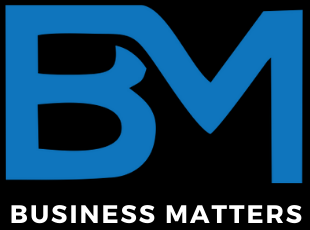Dreaming of launching your own business but worried about not having enough money? You’re not alone. Many of today’s successful entrepreneurs started with nothing more than an idea, passion, and determination. The truth is — you don’t need a huge budget to begin; you just need the right mindset, strategy, and resources.
In this complete guide on how to start a startup without money, we’ll walk you through practical steps to turn your idea into a real business — from validating your concept and finding co-founders to using free tools, networking smartly, and attracting investors later on. Whether you’re a student, a professional with a dream, or someone ready to escape the 9-to-5 grind, this guide will show you exactly how to start from zero and build something extraordinary.
Understanding the Concept: Can You Really Start Without Money?
The idea of starting a business without money may sound unrealistic, but it’s not. Many successful startups began with minimal or no capital.
The key lies in leveraging skills, knowledge, and available free resources rather than relying on financial resources alone.
For instance, businesses in digital marketing, online services, content creation, dropshipping, and SaaS solutions often require more time and effort than actual cash.
By focusing on skills and creativity, you can launch a business without breaking the bank.
Pro Tip: The most valuable currency in bootstrapped startups is your time and knowledge.

Mindset Shift: From Scarcity to Opportunity
Before you dive into the logistics of starting a startup, you need to adopt the right mindset. A lack of funds can either be a barrier or a motivator.
Key Mindset Principles:
- Resourcefulness over Resources – Focus on what you have, not what you lack.
- Lean Thinking – Build, test, and improve constantly rather than waiting for perfect conditions.
- Growth Mindset – Treat failures as learning opportunities, not setbacks.
Changing your perspective helps you see opportunities where others see obstacles.
Identify a Profitable Idea With Zero Investment
The next step is identifying a business idea that requires little to no money to start. Focus on ideas that leverage your skills, expertise, or existing digital platforms.
Low-Cost Startup Ideas:
- Freelance Services: Writing, graphic design, web development, digital marketing.
- Online Consulting: Business coaching, career advice, nutrition guidance.
- Dropshipping or Print-on-Demand: Selling products without holding inventory.
- Content Creation: Blogging, YouTube, podcasting, affiliate marketing.
- Local Services: Tutoring, home cleaning, pet services.
Tips for Validation:
- Conduct surveys or polls to test interest.
- Analyze competitors and identify gaps.
- Start with pre-orders or service-based offers to generate initial revenue.
Leverage Free Resources and Tools
When starting without money, using free tools and platforms is crucial. These allow you to operate professionally without investing in software, marketing, or infrastructure.
Essential Free Resources:
- Website Creation: WordPress, Wix, Carrd.
- Marketing & Outreach: Mailchimp (free tier), HubSpot CRM, Buffer for social media.
- Design & Branding: Canva, Unsplash, Pexels.
- Learning & Networking: Coursera, Udemy (free courses), LinkedIn.
Tip: Mastering these tools gives you a competitive advantage while keeping costs at zero.
Start With a Minimum Viable Product (MVP)
Instead of waiting for perfection, launch a minimum viable product (MVP). An MVP is a simple version of your product or service designed to test the market.
How to Build an MVP Without Money:
- Service-Based MVP: Offer your expertise first (consulting, freelancing).
- Landing Page MVP: Create a simple webpage to collect emails and validate interest.
- Digital Product MVP: Start with eBooks, courses, or digital downloads.
The MVP approach reduces financial risk and provides valuable user feedback early on.
Build Your Brand Without a Budget
A strong brand is essential for trust and recognition. Even without money, you can create a credible brand by leveraging free channels and strategic storytelling.
Steps to Build a Brand on Zero Budget:
- Social Media Presence: Use LinkedIn, Instagram, and Twitter to share expertise.
- Content Marketing: Start a blog or YouTube channel to demonstrate knowledge.
- Networking: Join online communities and forums related to your niche.
- Word of Mouth: Encourage satisfied users to share your service or product.
Consistency and authenticity are more important than expensive branding campaigns.
Fund Your Startup Without Personal Money
Even with zero initial investment, there are ways to secure small amounts of funding to scale operations.
Alternative Funding Options:
- Bootstrapping: Reinvest initial profits back into the business.
- Crowdfunding: Platforms like Kickstarter or Indiegogo.
- Grants & Competitions: Many government and private grants exist for startups.
- Angel Investors: Offer equity in exchange for seed funding.
- Partnerships & Bartering: Trade skills or services to reduce upfront costs.
Remember, every dollar you raise should directly contribute to growth.
Networking and Mentorship
Starting without money often means relying on relationships and mentorship. Surrounding yourself with the right people can provide guidance, credibility, and opportunities.
How to Build a Strong Network:
- Attend online webinars and local meetups.
- Join startup incubators or accelerators (many have free programs).
- Engage on LinkedIn and industry-specific forums.
- Seek mentors who have bootstrapped businesses successfully.
Mentorship can save you time, money, and avoid common mistakes.
Growth Strategies on a Shoestring Budget
Scaling your startup without money requires strategic growth hacks. Focus on organic reach, smart partnerships, and high ROI activities.
Budget-Friendly Growth Strategies:
- Content Marketing: Share expertise through blogs, videos, and podcasts.
- SEO Optimization: Drive traffic without paid ads.
- Referral Programs: Encourage users to bring in new customers.
- Collaborations: Partner with complementary businesses.
- Freemium Model: Offer a free version of your product to attract users.
The key is consistent effort and leveraging free or low-cost channels effectively.
Real-Life Examples of Successful Bootstrapped Startups
Many renowned companies started with little to no capital:
- Airbnb: The founders rented out an air mattress in their apartment to fund their idea.
- Spotify: Initially launched in Sweden with minimal investment, focusing on digital distribution.
- GitHub: Started as a side project by developers, using free tools and word-of-mouth promotion.
- Buffer: Began as a simple landing page to test interest before any coding or funding.
These examples show that resourcefulness and execution matter more than money in the early stages.
Common Challenges and How to Overcome Them
Starting a startup without money comes with hurdles. Here’s how to address them:
- Limited Resources: Focus on one project at a time; avoid spreading too thin.
- Time Constraints: Prioritize tasks that directly generate revenue or validate the idea.
- Lack of Exposure: Use free marketing channels and networking to increase visibility.
- Self-Doubt: Learn from failures and seek mentorship to maintain confidence.
Preparation and strategic thinking can mitigate most challenges of bootstrapping.
Conclusion
Starting a startup without money is entirely feasible with creativity, persistence, and strategic thinking.
By focusing on your skills, leveraging free tools, validating ideas early, and building relationships, you can turn your vision into a thriving business without heavy financial investment.
Remember, successful entrepreneurship is not about having money it’s about taking action, learning constantly, and solving real problems.
Your journey may be challenging, but every obstacle is an opportunity to grow and innovate.


